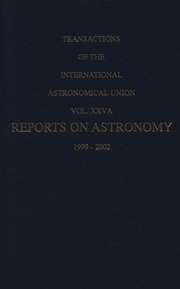No CrossRef data available.
Article contents
7. Direct measurements of meteoritic dust usingrockets and satellites
Published online by Cambridge University Press: 25 April 2016
Extract
The space density and the mass distribution of meteoritic dust in the vicinity of the Earth may be directly measured using rocket and satellite vehicles. In comparison with optical and radio detection of meteors, rocket measurements are capable of detecting particles with diameters from 0.1 to 10μ. This range of particle sizes has been observed from photometric measurements of zodiacal light, by ground collections of deep-sea sediments and of the magnetic component of dust settling on flat surfaces, and collections from high-altitude aircraft. Direct measurements from rocket-launched vehicles appear the most reliable for identifying and detecting the meteoritic dust component: since meteor observations are not sensitive enough to detect this component, ground collections suffer from contamination of the terrestrial component of dust and variations resulting from hyper-velocity interactions with the atmosphere, while zodiacal light measurements are capable of determining the gross aspects of the cosmic dust in the ecliptic subject to assumptions of light scattering from solid particles.
- Type
- Research Article
- Information
- Copyright
- Copyright © Cambridge University Press 1960


